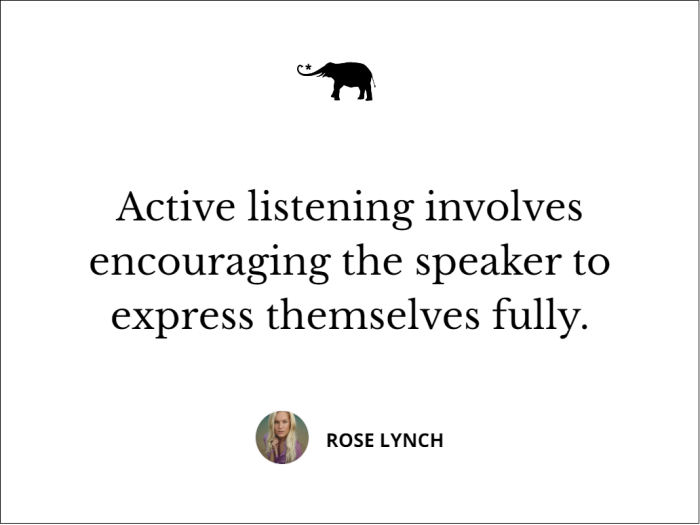Active listening is a critical skill that goes beyond merely hearing words. It involves fully engaging with the speaker by understanding, interpreting, and responding thoughtfully to their messages. In our fast-paced world, where distractions are constant, mastering active listening can significantly improve personal and professional relationships. Here are five practical ways to incorporate active listening into daily interactions.
1. Give Full Attention
Start by giving your undivided attention to the speaker. This means setting aside distracting thoughts, putting down your phone or other devices, and refraining from focusing on what you will say next. Being fully present signals to the speaker that their words are important to you. In group settings, this might mean orienting your body towards the speaker and nodding to acknowledge you are following along.
2. Encourage the Speaker
Active listening involves encouraging the speaker to express themselves fully. You can do this by using small verbal comments like “yes” or “I see,” and non-verbal cues like nodding or smiling. These signals don’t necessarily mean you agree with the speaker but show that you are engaged and following their train of thought. Encouraging the speaker makes the conversation more dynamic and interactive.
3. Practice Patience
Patience is a virtue in active listening. Resist the urge to interrupt or finish the speaker’s sentences. Even if the speaker is slow in expressing themselves, or if you think you know what they will say next, give them time to articulate their thoughts. Patience shows respect for the speaker’s perspective and allows you to fully grasp the message being conveyed.
4. Summarize and Reflect
To ensure understanding and show that you are actively engaged, periodically summarize or paraphrase what the speaker has said. For instance, you might say, “So what you’re saying is…” or “If I understand correctly, you feel that…”. This reflection not only confirms that you are listening but also gives the speaker a chance to correct any misunderstanding.
5. Ask Open-Ended Questions
Asking open-ended questions is a powerful tool in active listening. These questions encourage the speaker to expand on their thoughts and express themselves more deeply. Questions like “How did that make you feel?” or “What do you think should be done about this?” prompt further discussion and show that you are interested in their viewpoint.
Conclusion
Active listening is a skill that enriches communication and strengthens connections with others. By giving full attention, encouraging the speaker, practicing patience, summarizing key points, and asking open-ended questions, you can become a more effective communicator. Remember, active listening is not just a technique for conversation but a way to foster empathy and understanding in all your interactions.

 Share on bsky
Share on bsky





Read 0 comments and reply